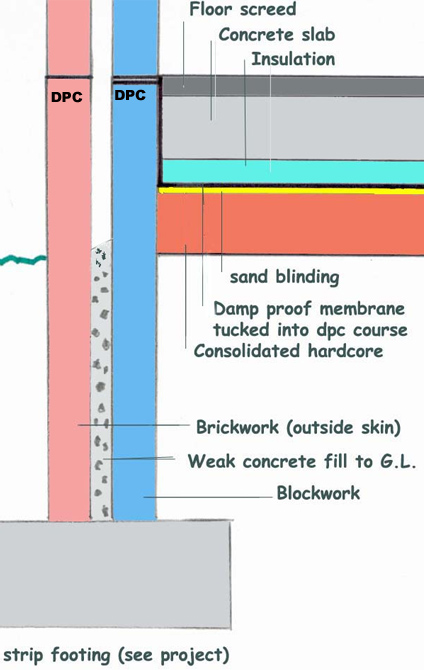Installing Damp Proof Membrane Floor
Damp proofing is an essential part of any basement finishing project. If you try to install parquet wood or carpet on top of concrete without damp proofing it, you will experience problems in the future.
When To Use a Damp Proof Membrane. If you are having your floor professionally installed, it is more than likely that your wood flooring fitter will measure the moisture content of your subfloor for you. However, even when it comes to professional installers, don’t just assume that the will test the moisture content of your subfloor.
- A damp-proof membrane is a material that can be laid underneath your flooring. It will prevent any damp rising up into the floor material. Chipboard is a particularly susceptible floor material that will suffer if damp is allowed to become a problem.
- Floor option - for damp floors, or basements use our membrane without the mesh - just lay chipboard flooring or screed directly onto the waterproof membrane As used by the Trade - Wall Lining Mesh Membrane is easy to fix on any type of drillable, sound masonry.
Damp concrete can lead to mildew and mold on the underside of the carpet or wood. If left unchecked, the mold can spread to the walls and create a mold infestation that is not only dangerous, but also costly. Damp proofing concrete floors isn't terribly difficult, although it can be time-consuming and confusing. The article below explains several important tips and methods of damp proofing your concrete basement floor.
1. Liquid Membrane
For this solution, you are essentially painting the floor of the basement. To laymen, it would seem like this would not be considered damp proofing. The liquid membrane is painted onto the concrete. When it dries, it creates an incredibly hard surface.
The membrane is formulated to create a seamless barrier between the underlayment and the concrete slab. It should be applied to the walls of the basement prior to finishing them. When you do this, you will be creating an airtight seal which will prevent moisture from traveling.
2. Cavity Drainage
If your damp proofing needs are minimal, then cavity drainage may be the solution for you. This damp proofing option is a specially designed plastic that you lay on the concrete and trim as needed to cover the entire floor. It is a membrane layer which sits between the concrete and the underlayment, but it is not a liquid.
It looks like bubble wrap, as it has small nooks and crannies. When dampness occurs on the concrete, the condensation doesn't penetrate the membrane but is instead redirected. Once the little pouches are filled with water, they drip off and flow toward the basement’s drainage hole.

3. Caulk and Epoxy Sealer
Damp proofing a basement floor is not always as easy as applying a membrane and then installing carpet or parquet. Water can find the tiniest hole or crack, then make it much larger.
Prior to applying a membrane, liquid or otherwise, always search for holes and cracks in the concrete floor, as well as gaps where the floor meets the wall. Apply silicone caulk along the wall as you would when sealing bathroom tile or a sink.
Installing Damp Proof Membrane Floor Tile
Epoxy is a product that is often used to fill and repair granite. It also works with concrete. Use epoxy to fill holes and cracks in the concrete. It will dry clear, flat, and completely waterproof.
Installing Damp Proof Membrane Floor
4. Dehumidifier
If you are finishing your basement, then a dehumidifier is an appliance that you must use until the area is sealed, finished, and insulated. A basement becomes damp and dank because of the coolness from the ground mixing with the heat from the home. A dehumidifier pulls moisture from the air to keep the basement dry.



